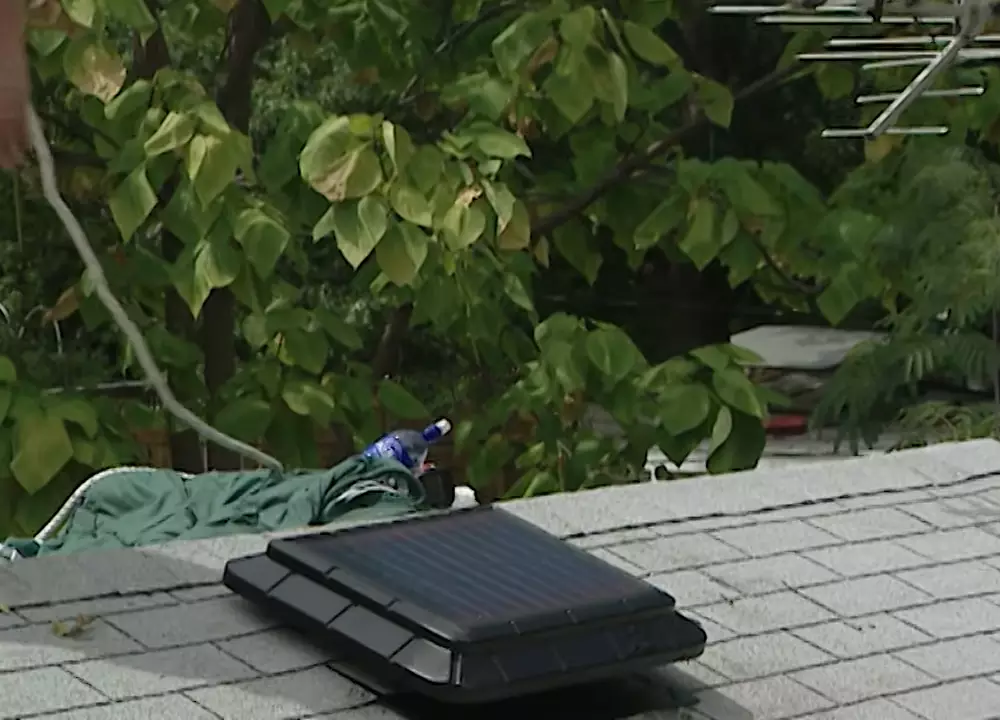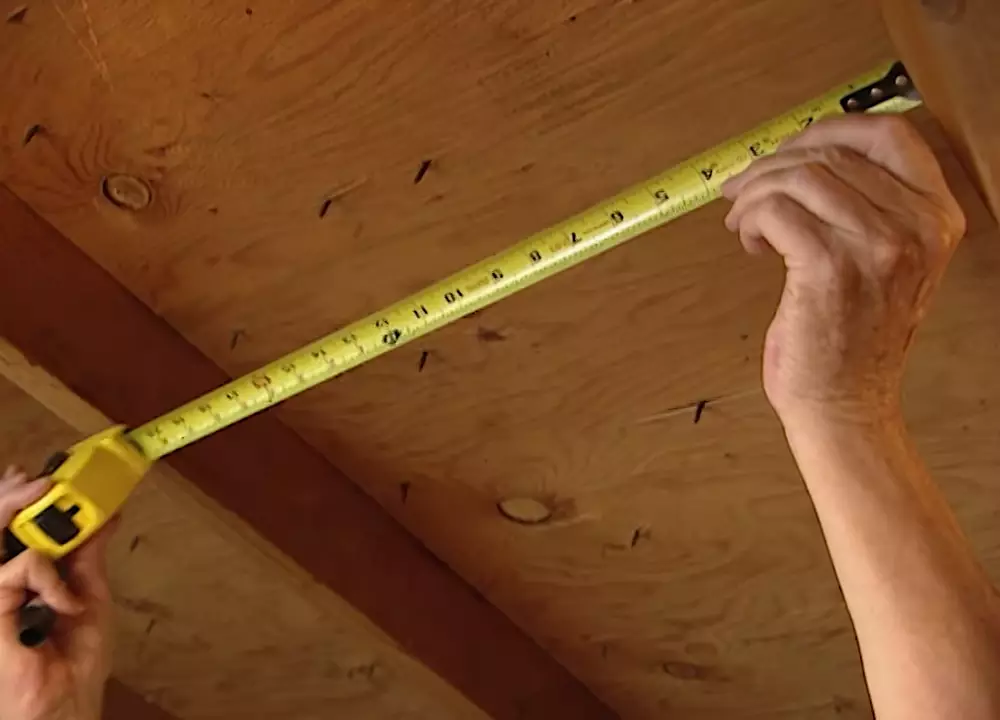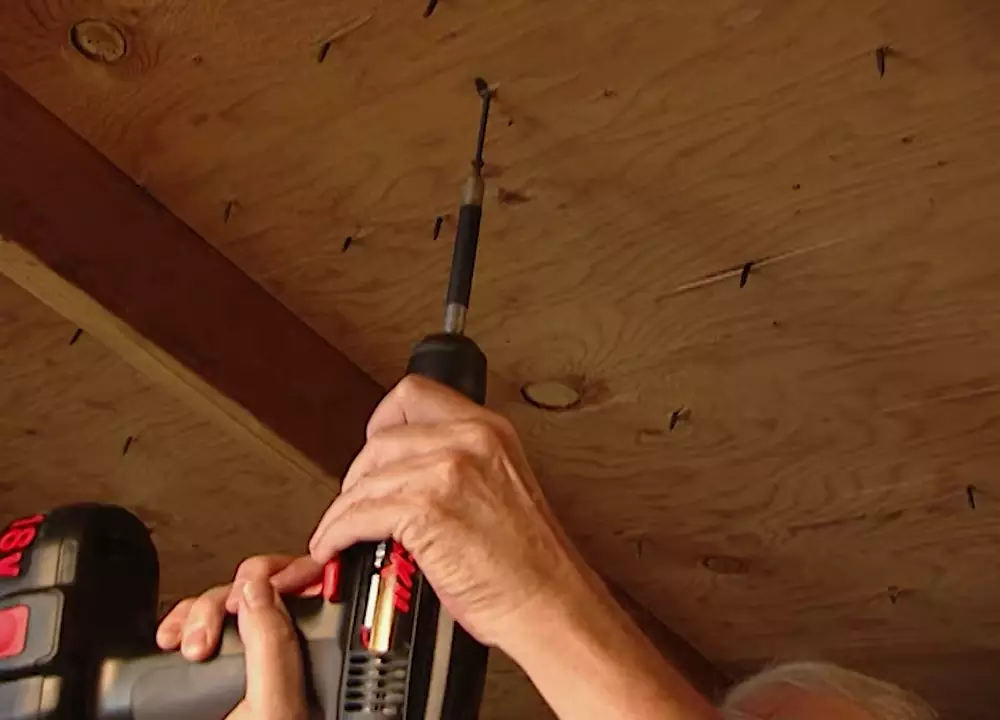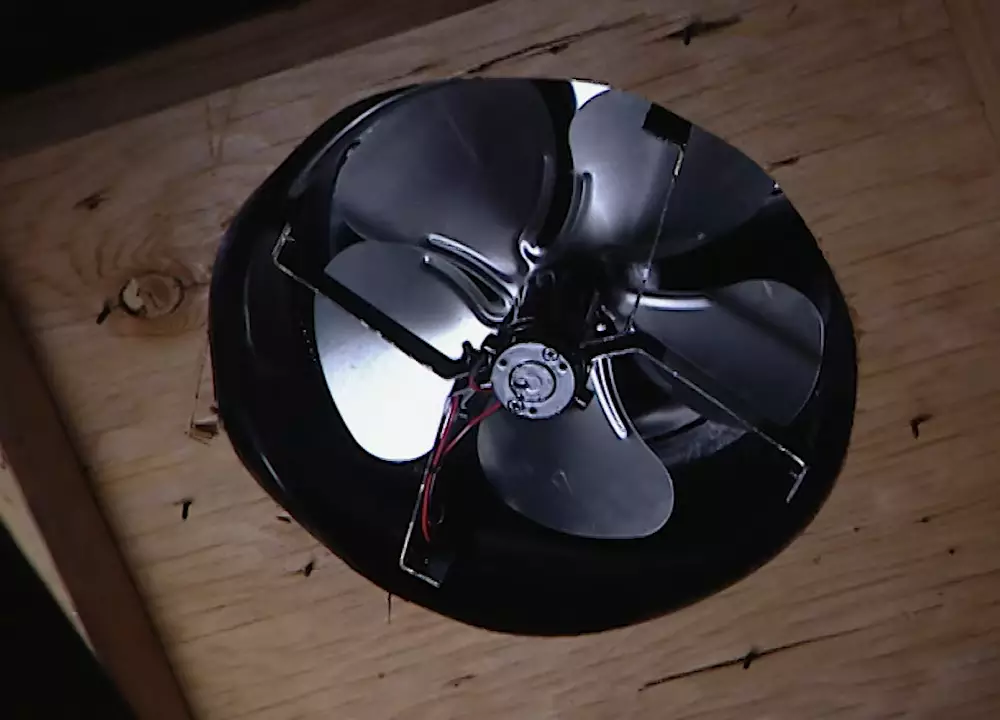To install a solar attic fan, follow these steps: locate a suitable spot on your roof, mark it, drill a pilot hole, then cut a larger hole, mount the solar panel, and connect the fan wiring. Installing a solar attic fan is a cost-effective and energy-efficient way to ventilate your attic, reducing heat buildup and extending the lifespan of your roof materials.
By harnessing the power of the sun, these fans help to reduce the strain on your air conditioning system and lower your energy costs. We will guide you through the installation process, providing step-by-step instructions to ensure a successful installation.
The Benefits Of Installing A Solar Attic Fan
Lower energy costs and environmental impact
Installing a solar attic fan not only helps you reduce your energy costs but also makes a positive impact on the environment. Traditional attic fans rely on electricity to function, which can contribute to increased energy consumption and higher utility bills. On the other hand, solar attic fans are powered by the sun’s energy, making them a cost-effective and eco-friendly solution.
By harnessing solar power, these fans help lower your energy costs by reducing the need for artificial cooling in your home. The fan’s solar-powered operation means that it runs during the day when your attic is likely to heat up the most, effectively ventilating the space and preventing the buildup of hot air.

When hot air accumulates in the attic, it can seep into your living spaces, making your air conditioner work harder to maintain a comfortable temperature. This increased workload not only adds strain to your cooling system but also results in higher energy consumption.
Installing a solar attic fan can help combat this issue by actively expelling hot air from your attic, keeping your home cooler and reducing the need for your air conditioner to run as frequently. This translates into lower energy bills each month and a reduced carbon footprint, making it a win-win situation for both your wallet and the environment.
Improved attic ventilation and temperature regulation
Adequate attic ventilation is crucial for maintaining the health and integrity of your home. Without proper airflow, hot air can stagnate in the attic, leading to a range of problems such as mold growth, roof damage, and decreased energy efficiency.
By installing a solar attic fan, you can greatly improve the ventilation in your attic space. The fan works by drawing in cooler air from outside and expelling hot air from your attic, creating a steady airflow. This natural ventilation process helps to prevent the buildup of moisture, heat, and pollutants, resulting in a healthier and more comfortable living environment.
In addition to enhancing overall ventilation, solar attic fans also play a key role in regulating the temperature in your attic. Attics can often become hot and stuffy, especially during the summer months. The solar attic fan helps to remove excess heat, preventing your attic from becoming a heat trap.
Keeping your attic temperature in check is essential for protecting your roof and the belongings stored in your attic. Excessive heat can cause shingles to deteriorate prematurely and can even warp or damage items stored in the attic. By efficiently controlling the temperature, a solar attic fan helps extend the lifespan of your roof while safeguarding your belongings from potential damage.
Overall, the installation of a solar attic fan offers numerous benefits. It reduces energy costs, lessens your carbon footprint, improves attic ventilation, and helps regulate temperature. This sustainable solution not only improves your home’s energy efficiency but also contributes to a healthier and more comfortable living environment.
Choosing The Right Solar Attic Fan For Your Home
Are you considering installing a solar attic fan in your home? With the growing popularity of sustainable energy solutions, solar attic fans have become a popular choice for homeowners looking to improve ventilation and reduce cooling costs. However, with a variety of options available in the market, choosing the right solar attic fan for your home can seem overwhelming.
Factors to consider when selecting a solar attic fan
When it comes to selecting a solar attic fan, there are a few key factors to consider. By taking these factors into account, you can ensure that you choose a fan that is not only suitable for your home but also provides effective and efficient ventilation. Let’s explore these factors in detail:

Sizing the fan based on attic square footage and ventilation needs
One of the most important factors to consider when selecting a solar attic fan is the size of the fan. This is determined by the square footage of your attic and your ventilation needs. It’s crucial to choose a fan that is appropriately sized to ensure sufficient air circulation. A fan that is too small may not effectively ventilate your attic, while a fan that is too large may lead to excessive cooling or heating. To determine the correct fan size, you can refer to the manufacturer’s guidelines or consult with a professional.
Maximizing ventilation efficiency
Another factor to consider is the ventilation needs of your attic. Different homes have different levels of ventilation requirements, depending on factors such as insulation, climate, and the presence of other ventilation systems. Insufficient ventilation can lead to a buildup of heat and moisture, which can cause damage to your roof and affect the overall temperature of your home. It’s important to select a solar attic fan that can effectively remove hot air and moisture, maximizing the efficiency of your ventilation system.
Quality and durability
Investing in a high-quality solar attic fan is essential to ensure long-term performance and durability. Look for fans that are constructed with durable materials such as rust-resistant metal or UV-resistant plastic. Additionally, consider the warranty offered by the manufacturer as an indication of the fan’s quality. A longer warranty period usually signifies a higher level of confidence in the product’s performance.
Energy efficiency and noise level
Since you’re opting for a solar-powered solution, it’s important to choose a fan that is energy-efficient. Look for fans that have a high solar panel efficiency rating and low power consumption. Additionally, consider the noise level of the fan, particularly if your attic is located close to living spaces. A fan with a lower noise level will ensure a quieter environment without compromising on ventilation performance.
By considering these factors, you can confidently choose the right solar attic fan for your home. Remember, each home’s requirements may vary, so it’s important to assess your specific needs before making a decision. Installing a solar attic fan is a wise investment that can improve your home’s comfort, reduce energy costs, and contribute to a greener environment.
Preparing For Installation
Before you begin installing a solar attic fan, it is important to properly prepare for the project. Taking the time to assess the attic for accessibility and suitability, gathering the necessary tools and materials, and ensuring proper safety precautions will help ensure a smooth and successful installation process. In this section, we will guide you through each step to ensure you are well-prepared for the installation.
Assessing the Attic for Accessibility and Suitability
Before diving into the installation process, it is crucial to assess your attic to determine if it is accessible and suitable for a solar attic fan. Here are some key factors to consider:
- Attic Accessibility: Determine if your attic can be easily accessed. Ensure there is a safe and secure ladder or staircase to enter the attic space.
- Attic Size: Measure the size of your attic to ensure it meets the requirements for the solar attic fan you plan to install.
- Roof Type: Assess the type of roof you have, whether it is sloped or flat, to determine the feasibility of installing a solar attic fan.
- Roof Material: Take note of the roofing material, such as asphalt shingles or metal, as it may affect the installation process.
- Ventilation Needs: Evaluate the ventilation needs of your attic, including any existing ventilation systems, to determine if a solar attic fan is the right solution.

Gathering the Necessary Tools and Materials
Now that you have assessed your attic and confirmed its suitability for a solar attic fan, it’s time to gather the necessary tools and materials for the installation. Here is a list of essential items you will need:
| Tools | Materials |
|---|---|
| – Ladder or Staircase | – Solar Attic Fan |
| – Measuring Tape | – Mounting Bracket |
| – Screwdriver | – Solar Panel |
| – Drill | – Wiring |
| – Caulk Gun | – Roofing Screws |
| – Safety Equipment | – Sealant |
Ensuring Proper Safety Precautions
Safety should always be a top priority when installing a solar attic fan. Here are some safety precautions to adhere to:
- Protective Gear: Wear the appropriate safety gear, including gloves, safety goggles, and a dust mask, to protect yourself from potential hazards.
- Secure the Attic: Ensure the area is clear of any debris or obstacles that may pose a tripping or falling hazard during installation.
- Turn off Power: If your attic has electrical wiring, switch off the power to prevent any accidents while working.
- Familiarize with Manuals: Read and understand the manufacturer’s instructions and safety guidelines before starting the installation process.
By carefully assessing your attic, gathering the necessary tools and materials, and taking proper safety precautions, you are now fully prepared to install a solar attic fan. Next, we will guide you through the step-by-step installation process to help you make the most of your new energy-efficient addition.
Steps To Installing A Solar Attic Fan
Installing a solar attic fan can help improve ventilation in your attic and reduce energy costs. Not only does it help expel hot air from your attic during the summer months, but it also prevents moisture buildup during the winter. Follow these simple steps to install a solar attic fan efficiently.
Checking for Existing Attic Ventilation
Prior to installing a solar attic fan, it’s crucial to assess the existing attic ventilation. Check if your attic already has vents or a ridge vent to determine the number of solar attic fans required. It’s important to maintain a proper balance between intake and exhaust vents to allow optimal airflow.
Locating the Optimal Installation Spot
Selecting the right location is essential for the effective functioning of your solar attic fan. Look for a spot on your roof with direct sunlight exposure for most of the day. This ensures that the solar panel receives sufficient sunlight to power the fan. Additionally, consider the proximity to an electrical supply or the wiring path.

Marking and Cutting the Roof Opening
Once you’ve determined the ideal installation spot, mark the roof where the solar attic fan will be placed. Take necessary measurements to ensure an accurate cut. While cutting, be cautious of any electrical or plumbing conduits that might be present. Use appropriate tools to carefully create the roof opening.
Installing the Flashing and Weatherproofing the Roof
Proper installation of the flashing is essential to prevent water leaks and ensure durability. Place the flashing around the roof opening, ensuring it is secure and properly sealed. Apply a layer of roofing cement or silicone sealant to provide an extra layer of weatherproofing. This will enhance the longevity and efficiency of your solar attic fan.
Wiring and Connecting the Solar Panel and Fan
Follow the manufacturer’s instructions to connect the solar panel and fan. Begin by mounting the solar panel in a position where it can receive direct sunlight. Connect the wiring from the solar panel to the fan, ensuring a secure and proper connection. Take measures to hide and protect the wiring to maintain a clean and organized installation.
Testing and Ensuring Proper Operation
After the installation is complete, it’s crucial to test the solar attic fan to ensure it operates correctly. Switch on the fan and monitor its performance, confirming that it spins smoothly and without any unusual noises. Verify if the solar panel is effectively charging the fan’s battery by checking its voltage. Testing ensures that your solar attic fan is fully functional and ready to provide the benefits of improved attic ventilation.
Maintenance And Troubleshooting Tips
Maintaining and troubleshooting your solar attic fan is essential to ensure it continues to operate efficiently and effectively. By following these tips, you can extend the lifespan of your fan and address any issues that may arise.
Regular cleaning and inspection
To keep your solar attic fan running smoothly, it’s important to perform regular cleaning and inspections. Here are some key steps to follow:
- Clean the solar panel: The solar panel is responsible for converting sunlight into energy. Over time, it may accumulate dust, dirt, or debris, which can reduce its efficiency. Regularly clean the panel using a soft cloth and mild detergent solution. Avoid using abrasive or chemical-based cleaners, as they can damage the panel’s surface.
- Inspect the fan blades: Check the fan blades for any signs of wear or damage. Look for cracks, bends, or excessive dirt build-up. Clean the blades using a brush or compressed air to remove any dirt or debris that may hinder the fan’s performance.
- Check the motor and wiring: Ensure that the motor and wiring connections are secure and free from any corrosion or damage. Tighten any loose connections and replace damaged wiring if necessary.
- Clear the vent and air ducts: Make sure the vents and air ducts are clear of any obstructions such as leaves, bird nests, or debris. Blocked vents can restrict airflow and reduce the fan’s effectiveness.
- Monitor for any abnormal noise or vibration: Listen for any unusual noises or vibrations while the fan is running. These could be indicators of underlying issues that require attention.

Addressing common issues and solutions
Despite regular maintenance, common issues may still arise with your solar attic fan. Here are some common problems and their respective solutions:
| Issue | Solution |
|---|---|
| The fan is not operating | – Check the solar panel for any shading or obstruction – Verify the fan is receiving ample sunlight – Inspect the wiring for loose connections |
| Fan blades are not spinning | – Ensure the blades are not blocked by debris – Check for any motor or wiring issues – Replace worn-out or damaged fan blades |
| The fan is running but not effectively cooling the attic | – Check for obstructions in the vents or air ducts – Verify the solar panel’s position and angle for optimal sunlight exposure – Consider installing additional fans for better airflow in larger attics |
Extending the lifespan of the solar attic fan
To maximize the lifespan of your solar attic fan and ensure long-term performance, consider implementing the following tips:
- Regular maintenance: Follow the cleaning and inspection guidelines mentioned earlier to keep the fan in good condition.
- Proper installation: Ensure the fan is installed correctly, following the manufacturer’s instructions. Improper installation can lead to performance issues or premature failure.
- Protective measures: Shield the solar panel from extreme weather conditions using covers or protective coatings. This can prevent damage caused by heavy rain, snow, or hail.
- Monitor performance: Keep track of the fan’s performance to identify any decline in efficiency or effectiveness. This can help you address issues promptly and avoid further damage.
- Professional assistance: If you encounter complex or persistent issues with your solar attic fan, it’s advisable to seek professional assistance from a qualified technician who specializes in solar fan installation and maintenance.
By following these maintenance and troubleshooting tips, you can enjoy the benefits of a well-maintained solar attic fan, such as improved ventilation, reduced energy costs, and a more comfortable living space.
Frequently Asked Questions On How To Install A Solar Attic Fan
Can I Install A Solar Attic Fan Myself?
Yes, you can install a solar attic fan yourself.
Are Solar Powered Attic Fans Worth It?
Solar powered attic fans are definitely worth it. They reduce energy costs, increase home comfort, and extend the lifespan of the roof. Additionally, they improve air circulation and prevent moisture buildup, reducing the risk of mold and mildew. Overall, solar powered attic fans are a valuable investment for homeowners.
Where Is The Best Place To Put A Solar Attic Fan?
The best place to put a solar attic fan is on the roof. Roof installation ensures maximum sun exposure, making the fan more efficient. It helps remove hot air from the attic, reducing energy costs and improving overall indoor comfort.
What Are The Disadvantages Of Solar Attic Fans?
Solar attic fans have a few disadvantages. Firstly, they may not work efficiently during cloudy or rainy weather, reducing their effectiveness. Secondly, they require a proper amount of sunlight to operate at their full potential. Finally, the initial cost of purchasing and installing a solar attic fan can be high.
Conclusion
Installing a solar attic fan is an effective way to improve energy efficiency in your home. By harnessing the power of the sun, you can reduce your reliance on traditional electrical systems while keeping your attic cool and well-ventilated. The step-by-step installation process, as outlined in this blog post, is simple and achievable for most homeowners.
With the right tools and a little know-how, you can enjoy the benefits of a solar attic fan and do your part for the environment. So why wait? Take action now and start reaping the rewards of a more energy-efficient home.
